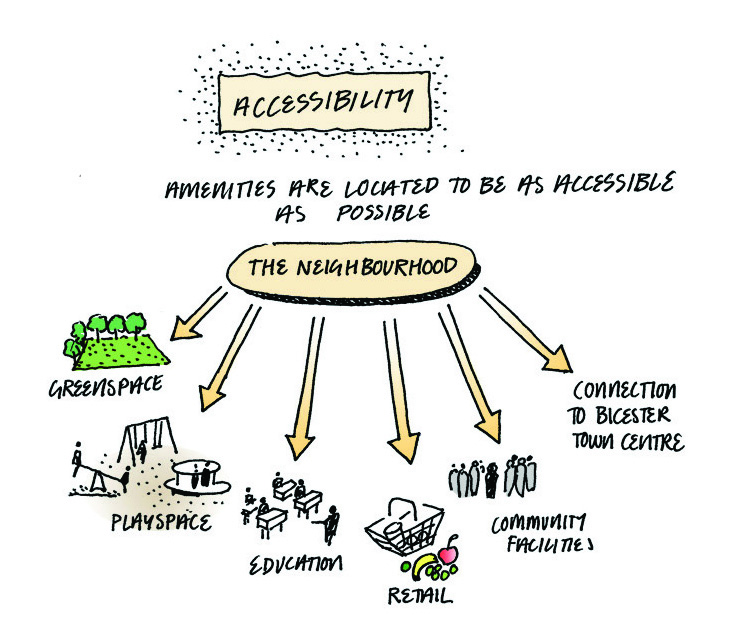Masterplanning Design Approach to Sustainable Mobility
Katerina Karaga, Associate at Farrells London partnered with Momentum Transport Consultancy’s Natasha Brown, to discuss design approaches to sustainable mobility in new developments, with a focus on garden communities.
The past 18 months have tested our lifestyles in many ways. This has included city residents re-evaluating urban living, with an increased interest for the countryside and village locations as people search for green space and bigger homes to accommodate working from home during the pandemic and beyond.

To respond to these trends, as well as tackle the housing crisis, the government’s aim is to deliver, on average, 300,000 new homes a year with a significant part of it in an environmentally-friendly way by building sustainable settlements – as garden communities.
One of the greatest challenges when designing garden communities, and a risk to their status of truly sustainable developments, lies in mobility.
The relationship between garden communities and private-car ownership is often the result of limited public transport, poor quality of public realm and the lack of provision of walking and cycling routes, as well as few amenities within walking or cycling distance.
In areas where highway networks are congested, planning consent will only be achieved with minimal or no highway impacts. Therefore, developments that propose high-quality, well-connected sustainable transport options will enable and encourage people to walk and cycle and help to achieve the necessary mode share to gain planning consent.
So, how can we do it? What are the principles of sustainable mobility? And how are these evolving?
One of the positives we have seen from the pandemic is that small quick-win projects for our streets can make a massive impact on the way we use our public realm. Many pilot projects have increased or quickened the implementation of active travel on our streets in the past year. This micro-focus can enable wider public realm transformation and behavioural change. If it can be achieved in complex urban centres with multiple stakeholders, it should be possible to apply similar principles in garden communities.
The “15-minute city” concept, a hot topic in masterplanning in 2020 and 2021, can be easily applied to the garden communities design with the aim of improving sustainable mobility. Self-sustaining developments reduce the need for unnecessary long-distance travel, often travel by car, therefore neighbourhoods are more walkable and cycle-able, have a strong sense of community, promote health and wellbeing, and in the long run, improve resilience to health emergencies, and promote sustainability and liveability.
This is why it’s important for garden communities to be well connected to an existing established settlement with key amenity space provision.
Farrells masterplan, North West Bicester, is the UK’s first eco-town with the initial phase providing 393 truly zero carbon homes and 40% of the overall masterplan to be developed as parks and green areas, including bicycle lanes, footpaths and public transport as an integral part of the scheme. Schools will be located within walking distance of all homes, while jobs created will be within sustainable travel distance. A community hub accessed via mobile devices will allow residents to check car club availability, monitor energy usage and prices, check public transport information and communicate with other residents.
Momentum is also working on a large-scale masterplan project in the West of England that is based on the 15-minute city or self-sustaining community concept. The masterplan is designed so that people can both live and work within the same area and walk or cycle easily between their homes and workplaces. The masterplan will also provide other community uses such as schools and leisure facilities and a public transport hub for those that need to travel further. High-quality walking and cycling facilities will link the site to the wider network of routes and reduce severance caused by existing rail and highway infrastructure. Parking is proposed to be located on the periphery of the site with limited vehicle access across the site.
With growing pressure on garden communities to provide for the post-pandemic lifestyle, they need to be designed in a future-proof way to be resilient and flexible, providing high quality walking and cycling facilities and allowing us to adapt to new and more sustainable methods of transport such as electric bikes and scooters, electric car clubs, mobility as a service and potentially also autonomous vehicles.

